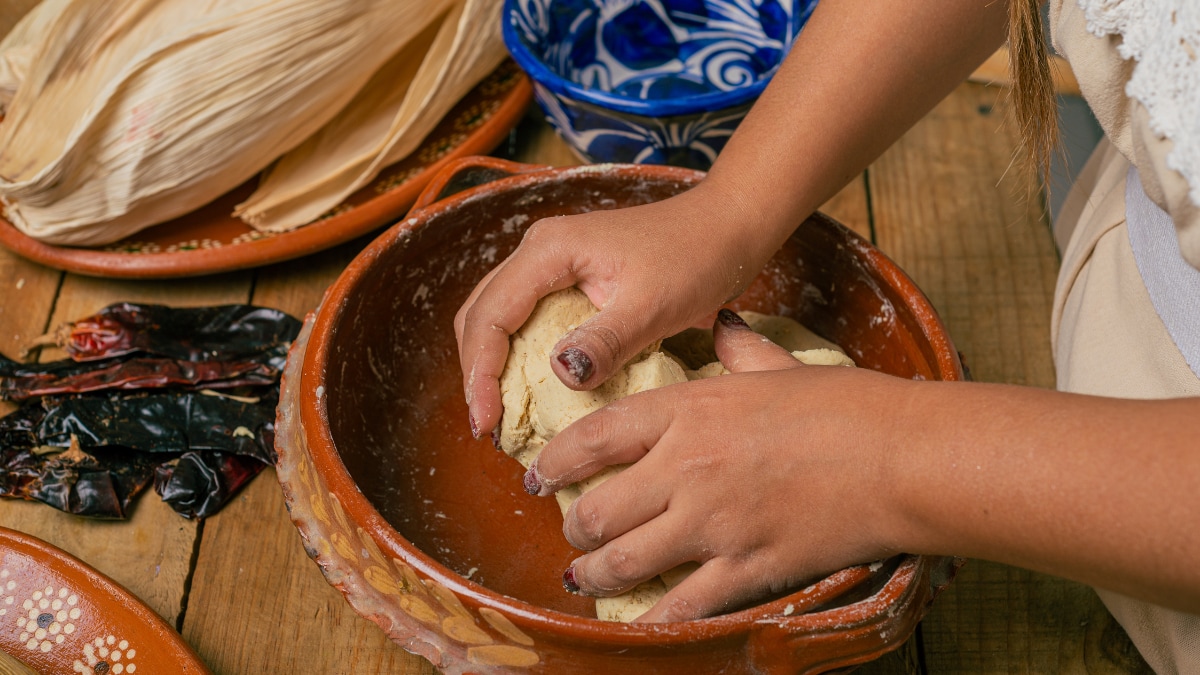Key points
- Hispanic/Latina women are more likely to have a child born with a neural tube defect (NTD) than non-Hispanic White and Black women.
- Folic acid fortification of corn masa flour could help prevent NTDs.
- More work is needed to improve folic acid intake among Hispanic/Latina women.

Populations impacted
Research shows that some women in the United States do not get enough folic acid to prevent neural tube defects (NTDs). Hispanic/Latina women are more likely to have a child born with an NTD than non-Hispanic White and Black women.123
Why is there health inequity?
Research shows Hispanic/Latina women face unique challenges in meeting folic acid recommendations. These include:
- Lower levels of folate: Compared with non-Hispanic White women, Hispanic/Latina women have lower levels of folate in their blood.4
- More likely to have an MTHFR C677T gene variant: Hispanic/Latina women are more likely than non-Hispanic White and Black women to have the MTHFR C677T gene variant.5
- Low level of awareness of folic acid benefits: Hispanic/Latina women have low levels of awareness of the benefits of folic acid.6
- Lower folic acid intake: Hispanic/Latina women are less likely to get folic acid from fortified foods or take a multivitamin containing folic acid. Lower intake is more common among women who primarily speak Spanish, were born outside the United States, and have lived in the United States for a shorter period of time.6789101112
Overcoming barriers
To address this health disparity and help more Hispanic/Latina women get the recommended daily value of folic acid, the US Food and Drug Administration allowed folic acid to be added voluntarily to corn masa flour. Corn masa flour is a staple in the diets of many Hispanic/Latina women.

The benefits of adding folic acid to corn masa flour include:
What CDC is doing
Data from 2011–2020 have shown that voluntary folic acid fortification of corn masa flour has not yet improved folate status among Hispanic/Latina women. It's important to check food labels, as specific corn masa flours may or may not contain added folic acid.14
CDC continues to monitor trends in folate levels, consumption, knowledge, and practices among women using different surveys and research methods. Our research aims to better understand and reduce risks, especially for Hispanic/Latina women.
- Williams J, Mai CT, Mulinare J, et al. Updated estimates of neural tube defects prevented by mandatory folic acid fortification – United States, 1995–2011. MMWR Morb Mortal Wkly Rep. 2015;64(1):1–5.
- Centers for Disease Control and Prevention (CDC). Racial/ethnic differences in the birth prevalence of spina bifida – United States, 1995–2005. MMWR Morb Mortal Wkly Rep. 2009;57(53):1409–1413.
- Canfield MA, Mai CT, Wang Y, et al. The association between race/ethnicity and major birth defects in the United States, 1999–2007. Am J Public Health. 2014;104(9):e14–23.
- Tinker SC, Hamner HC, Qi YP, Crider KS. U.S. women of childbearing age who are at possible increased risk of a neural tube defect-affected pregnancy due to suboptimal red blood cell folate concentrations, National Health and Nutrition Examination Survey 2007 to 2012. Birth Defects Research A Clin Mol Teratol. 2015;103(6):517–526.
- KS, Zhu JH, Hao L, et al. MTHFR 677C->T genotype is associated with folate and homocysteine concentrations in a large, population-based, double-blind trial of folic acid supplementation. Am J Clin Nutr. 2011;93(6):1365–1372.
- deRosset L, Mullenix A, Flores A, Mattia-Dewey D, Mai CT. Promotora de salud: Promoting folic acid use among Hispanic women. J Women's Health. 2014;23(6):525–531.
- Yang QH, Carter HK, Mulinare J, Berry RJ, Friedman JM, Erickson JD. Race-ethnicity differences in folic acid intake in women of childbearing age in the United States after folic acid fortification: Findings from the National Health and Nutrition Examination Survey, 2001–2002. Am J Clin Nutr. 2007;85(5):1409–1416.
- Wolff T, Witkop CT, Miller T, Syed SB, U.S. Preventive Services Task Force. Folic acid supplementation for the prevention of neural tube defects: An update of the evidence for the U.S. Preventive Services Task Force. Ann Intern Med. 2009;150(9):632–639.
- Tinker SC, Devine O, Mai C, et al. Estimate of the potential impact of folic acid fortification of corn masa flour on the prevention of neural tube defects. Birth Defects Research A Clin Mol Teratol. 2013;97(10):649–657.
- Wong EC, Rose CE, Flores AL, Yeung LF. Trends in multivitamin use among women of reproductive age: United States, 2006–2016. J Women's Health (Larchmt). 2019;28(1):37–45.
- HC, Cogswell ME, Johnson MA. Acculturation factors are associated with folate intakes among Mexican American women. J Nutr. 2011;141(10):1889–1897.
- Long, K., Cara, T., Yue, X., & Yeung, L. F. (2024). Multivitamin use among Hispanic women of reproductive age in the United States, 2013–2022. Journal of Women's Health. https://doi.org/10.1089/jwh.2023.0380
- HC, Tinker SC, Flores AL, Mulinare J, Weakland AP, Dowling NF. Modelling fortification of corn masa flour with folic acid and the potential impact on Mexican-American women with lower acculturation. Public Health Nutr. 2013;16(5):912–921.
- Wang, Arick, et al. "Update on the Impact of Voluntary Folic Acid Fortification of Corn Masa Flour on Red Blood Cell Folate Concentrations—National Health and Nutrition Examination Survey, 2011–March 2020." Birth Defects Research, vol. 116, no. 3, 1 Mar. 2024, https://doi.org/10.1002/bdr2.2321.
- Flores AL, Cordero AM, Dunn M, et al. Adding folic acid to corn masa flour: Partnering to improve pregnancy outcomes and reduce health disparities. Prev Med. 2018;106:26–30.
- Wang A, Rose CE, Qi YP, Williams JL, Pfeiffer CM, Crider KS. Impact of Voluntary Folic Acid Fortification of Corn Masa Flour on RBC Folate Concentrations in the U.S. (NHANES 2011–2018). Nutrients. 2021, 13(4), 1325; https://doi.org/10.3390/nu13041325
